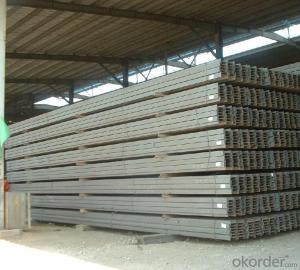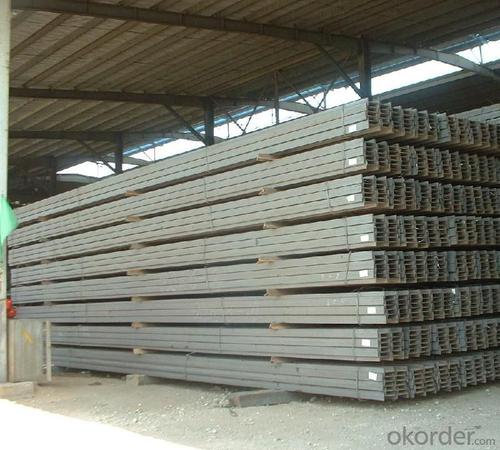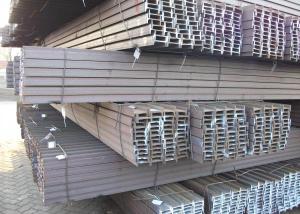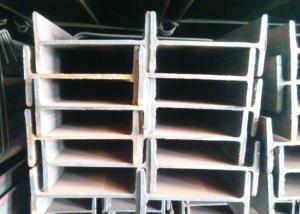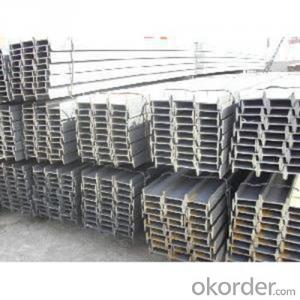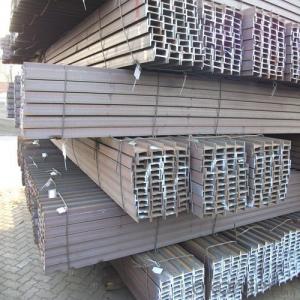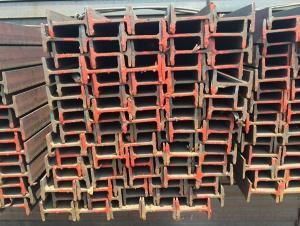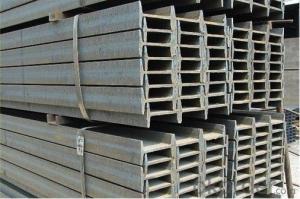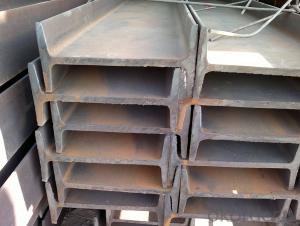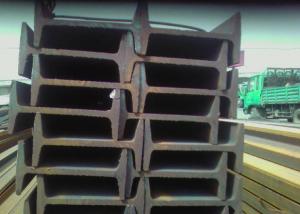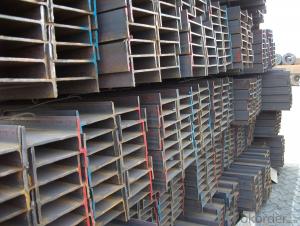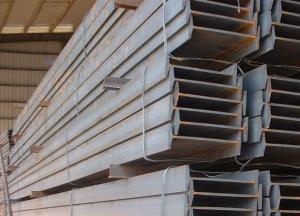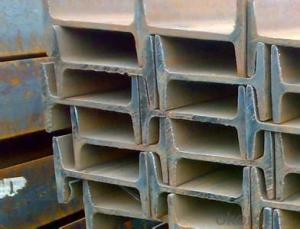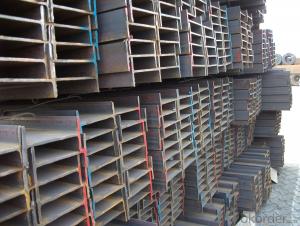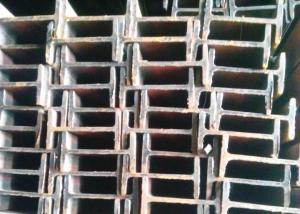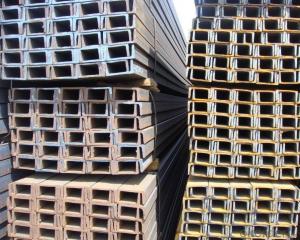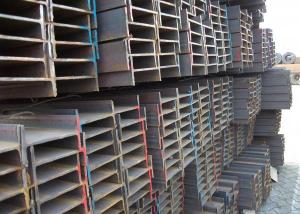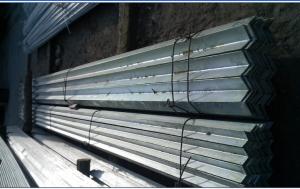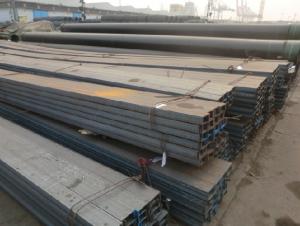European Standard IPE160 with High Quality
- Loading Port:
- Tianjin
- Payment Terms:
- TT OR LC
- Min Order Qty:
- 25 m.t
- Supply Capability:
- 15000 m.t/month
OKorder Service Pledge
OKorder Financial Service
You Might Also Like
Product Description of European Standard IPE160 with High Quality:
Specifications of European Standard IPE160 with High Quality:
1.Standard: EN10025
2.Material: S235JR or Equivalent
3.Length: 6m, 12m
4.Size:
Size (mm) | Mass (kg/m) |
| 160*82*5.0 | 15.80 |
Usage & Applications of European Standard IPE160 with High Quality:
Commercial building structure;
Pre-engineered buildings;
Machinery support structures;
Prefabricated structure;
Medium scale bridges.
Packaging & Delivery of European Standard IPE160 with High Quality:
1. Transportation: the goods are delivered by truck from mill to loading port, the maximum quantity can be loaded is around 40MTs by each truck. If the order quantity cannot reach the full truck loaded, the transportation cost per ton will be little higher than full load.
2. With bundles and load in 20 feet/40 feet container, or by bulk cargo, also we could do as customer's request.
3. Marks:
Color mark: There will be color marking on both end of the bundle for the cargo delivered by bulk vessel. That makes it easily to distinguish at the destination port.
Tag mark: There will be tag mark tied up on the bundles. The information usually including supplier logo and name, product name, made in China, shipping marks and other information request by the customer.
If loading by container the marking is not needed, but we will prepare it as customer's request.
FAQ:
We have organized several common questions for our clients, may help you sincerely:
1. How to inspect the quality?
We have a professional inspection group which belongs to our company. We resolutely put an end to unqualified products flowing into the market. At the same time, we will provide necessary follow-up service assurance.
We have established the international advanced quality management system,every link from raw material to final product we have strict quality test;We resolutely put an end to unqualified products flowing into the market. At the same time, we will provide necessary follow-up service assurance.
2. Is there any advantage about this kind of product?
Steel I beam bar IPE has a reduced capacity in the transverse direction, and is also inefficient in carrying torsion, for which hollow structural sections are often preferred.
Images of European Standard IPE160 with High Quality:
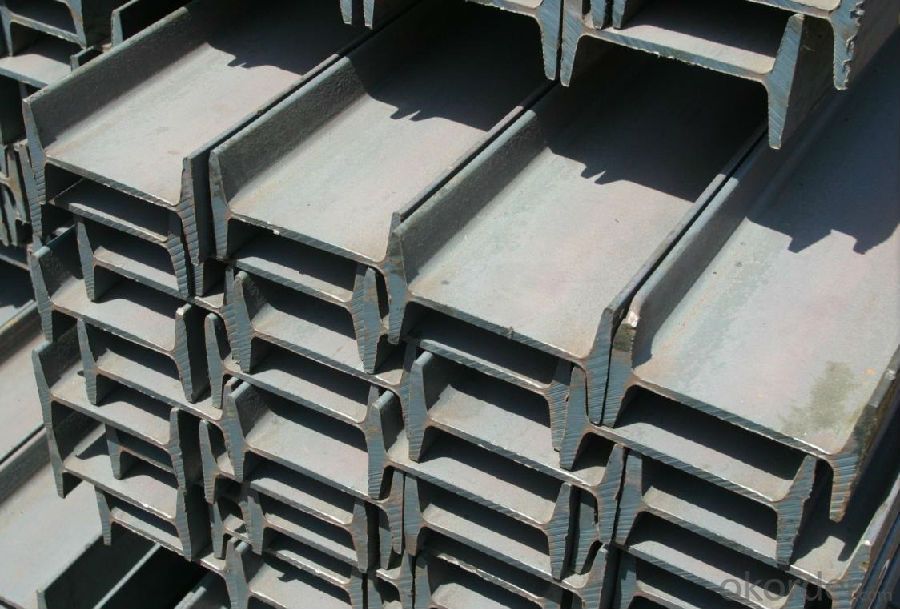
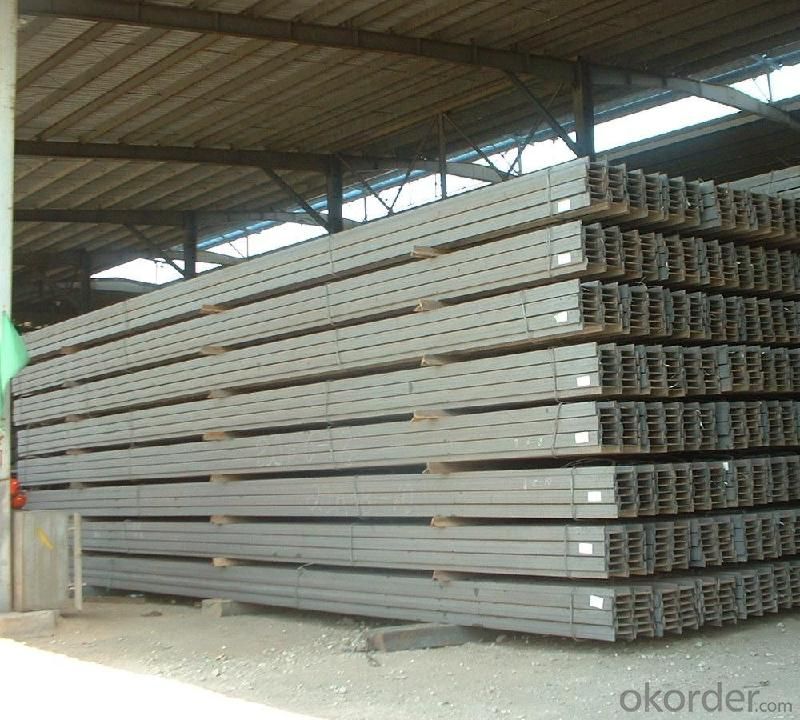
*If you would like to get our price, please inform us the size, standard/material and quantity. Thank you very much for your attention.
- Q: How do steel I-beams perform in terms of long-term stability?
- Steel I-beams are known for their exceptional long-term stability. Due to their sturdy construction, they are highly resistant to sagging, warping, or twisting over time. This makes them a reliable choice for supporting heavy loads and ensuring the structural integrity of buildings and bridges for many years.
- Q: What is the maximum load capacity of a steel I-beam?
- The load capacity of a steel I-beam is determined by multiple factors, including the beam's dimensions, the grade of steel utilized, and the span or distance between supports. Typically, the load capacity of a steel I-beam can vary from a few hundred pounds to numerous tons. It is imperative to seek guidance from structural engineers or refer to load capacity charts provided by steel manufacturers in order to ascertain the precise maximum load capacity for a specific steel I-beam in a particular application. These experts take into account various elements such as the beam's cross-sectional shape, material properties, and the expected load distribution to accurately calculate the maximum load capacity.
- Q: How do steel I-beams contribute to sustainability in construction?
- Sustainability in construction is enhanced by the presence of steel I-beams, which offer a range of benefits: 1. Enhanced Durability: Steel is renowned for its durability, enabling structures constructed with steel I-beams to withstand adverse weather conditions, seismic activity, and fire. Consequently, the longevity of these structures is increased, reducing the need for frequent repairs or replacements and minimizing waste. 2. Recyclability: Steel is among the most recycled materials globally. At the end of a structure's life cycle, steel I-beams can be easily recycled and utilized in the production of new steel products. This diminishes the demand for virgin steel production, conserves natural resources, and reduces energy consumption and greenhouse gas emissions associated with manufacturing processes. 3. Reduced Weight: Steel I-beams possess a high strength-to-weight ratio compared to alternative construction materials. This means they offer robust structural support while using less steel material. Additionally, the reduced weight facilitates more efficient transportation, leading to decreased fuel consumption and carbon emissions during shipping. 4. Versatility: Steel I-beams provide significant design flexibility, empowering architects and engineers to create innovative and sustainable structures. These beams are readily customizable to meet diverse architectural requirements and can support large spans, minimizing the need for additional columns or supports. Such flexibility enhances the efficiency and adaptability of buildings, promoting long-term sustainability. 5. Enhanced Energy Efficiency: Steel I-beams contribute to a building's energy efficiency by enabling larger window and door openings. This allows for increased natural light and ventilation, reducing the dependency on artificial lighting and HVAC systems. Furthermore, steel I-beams can be combined with insulation materials to create high-performance building envelopes, enhancing thermal efficiency and decreasing energy consumption. In summary, steel I-beams play a vital role in sustainable construction by offering durability, recyclability, lightweight design, versatility, and energy efficiency. These attributes contribute to the reduction of environmental impact, preservation of resources, and the creation of resilient and sustainable structures.
- Q: How do steel I-beams perform in areas with high humidity?
- Areas with high humidity are well-suited for the use of steel I-beams. Steel possesses excellent resistance to moisture and is not prone to rust or corrosion. However, it is crucial to guarantee adequate maintenance and protection to avoid any potential problems. To accomplish this, applying protective coatings or paint to the steel beams is recommended, as they serve as a barrier against moisture. Moreover, conducting regular inspections and cleanings aids in detecting and resolving any indications of corrosion or damage. All in all, steel I-beams are a dependable and long-lasting option for areas with high humidity, as long as they receive proper care and maintenance.
- Q: How do engineers determine the required size of a steel I-beam for a specific application?
- Engineers determine the required size of a steel I-beam for a specific application by considering various factors such as the load it needs to support, the span it needs to cover, and the desired deflection limits. They analyze the structural requirements using mathematical formulas, computer simulations, and industry standards to ensure the I-beam can safely withstand the anticipated forces and maintain the desired level of structural integrity.
- Q: Can steel I-beams be used in aviation or aerospace renovation projects?
- Steel I-beams are indeed applicable for aviation or aerospace renovation endeavors. Their strength and durability make them a popular choice in construction, allowing them to bear heavy loads. In aviation or aerospace projects, where maintaining structural integrity is paramount, steel I-beams can be employed to fortify existing structures or construct new ones. They serve the purpose of supporting the weight of aircraft, hangars, and other aerospace facilities. Moreover, steel I-beams provide design flexibility and can be customized to fulfill specific project requirements. However, it is crucial to ensure that the steel I-beams comply with the necessary safety standards and regulations, ensuring the dependability and performance of the refurbished aviation or aerospace structure.
- Q: Can steel I-beams be used for industrial platforms or catwalks?
- Absolutely, industrial platforms or catwalks can indeed utilize steel I-beams. Renowned for their robustness and resilience, steel I-beams present an exceptional option for such purposes. Their capacity to uphold substantial weights and endure continuous pedestrian movement, alongside other industrial operations commonly observed on platforms or catwalks, further solidifies their suitability. Moreover, steel I-beams offer the advantage of effortless customization to meet precise design and structural prerequisites, thereby facilitating efficient and secure construction of industrial platforms or catwalks.
- Q: How can I distinguish between rolled H steel and welded I-beam?
- Hot rolled steel is whole, so the corners of smooth transition, especially on the two h plate has a certain inclination. H type steel welded by plate group of welding, so both sides of H steel are flat. As shown, the first one is I-beam and the second is H steel.
- Q: Are steel I-beams affected by vibrations?
- Yes, steel I-beams can be affected by vibrations. Vibrations can cause the beams to resonate, leading to fatigue and potential failure over time. It is important to consider the frequency, amplitude, and duration of vibrations when designing structures with steel I-beams to ensure their stability and durability.
- Q: What is the maximum span length for steel I-beams?
- The maximum span length for steel I-beams varies depending on the specific type and size of the beam, as well as the load and deflection criteria. However, in general, steel I-beams can span from a few feet to over 100 feet.
Send your message to us
European Standard IPE160 with High Quality
- Loading Port:
- Tianjin
- Payment Terms:
- TT OR LC
- Min Order Qty:
- 25 m.t
- Supply Capability:
- 15000 m.t/month
OKorder Service Pledge
OKorder Financial Service
Similar products
Hot products
Hot Searches
Related keywords
